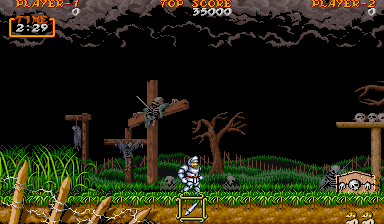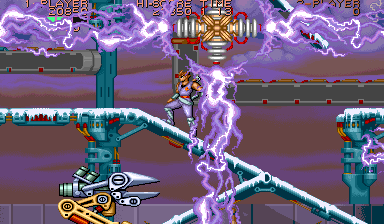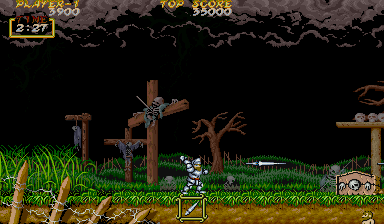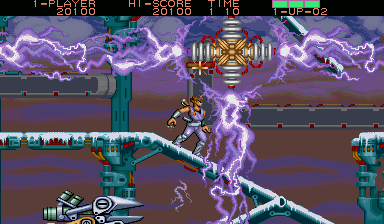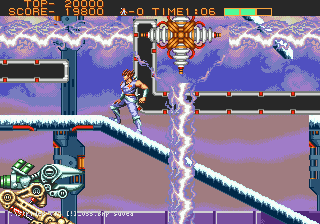
 The X68000 is an unheard-of gem from Japan. Released around the same time as the Amiga and Atari ST, it was leagues ahead of them both in terms of design and capability. Originally released in 1987 with a 10MHz 68000 CPU and 1MB RAM, the series finished six years later with a 25MHz 68030, 4MB RAM and a 80MB HD. Earlier models used SASI (Shugart Associates System Interface) which was a forerunner to SCSI, and is almost pin compatible with early SCSI drives. Later models used real SCSI. The series favoured (And this is cool) soft-eject 5.25" floppies though there were a few "Compact" releases with 3.25" drives and smaller cases. One of the most striking things about the system was the case - a two-halved tower bisected by a click-in/out carrying handle, reminiscent more of a mainframe computer than a PC. It was one of the first computers to feature soft-on power, where the main power supply was always on and the front-mounted power switch would only signal the machine to shut down, giving software time to save, shutdown and usually fade out the sound and the screen. Two expansion slots closely related to the ISA standard, and a host of ports as standard: 2 MSX compatible joystick ports, parallel, serial, external floppy (It could run 4 drives, two were built-in) port, 3D goggles port, as well as TV/monitor control,SASI, headphone, microphone, RGB in and out... Very advanced for the time, and in terms of design it's nearly unmatched (in my mind) to this day. On this page you'll find all the details and differences between units, a list of some of the better games released for the system, tech specs, screenshots, and maybe more! Also, if you'd like to see what the boxes look like, you can check out the Sales page. This article is translated to Serbo-Croatian language by Jovana Milutinovich from Webhostinggeeks.com. Back to NFG Games X68000 Gallery 1 X68000 Gallery 2 X68000 Floppy Sleeve Gallery X68000 Power Supply Repair |
|
|
The X68000 series spanned 20 different models, with three different form factors and one slight case redesign. The original model, Expert, Ace + Super all shared the same dual-tower cray-like design. The XVI used the same design with a slight cosmetic modification. The pro was a horizontal desktop model, with more room internally and four expansion ports. The Compact models were single-tower vertical models approximately two thirds as wide and a little shorter than the normal towers.
All units shared the same connectors, except for the Compact units which used high-density connectors to save space. The connector for the SASI and SCSI ports is the same. Wherever possible try and get a 2MB unit. Many games require 2MB to run, but only a tiny handful (Super Street Fighter 2 is the only one that comes to mind) require more than 2MB. A HardDrive is not important, since all games run from floppy. If you expect to play a lot of Street Fighter or Fatal Fury, or some of the RPG games which can have up to thirteen floppies, then a HD would be wise. Keep in mind this will drastically increase the complexity of the system, as well as the amount of Japanese you'll need to know to operate it. |
| ||||


